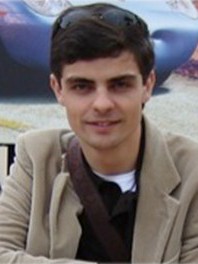abstract
In this work, two pulps, bleached (BP) and raw pulp (RP), derived from the paper production process, were used as precursors of non-activated and activated carbons (ACs). In the case of non-ACs, the production involved either pyrolysis or pyrolysis followed by acid washing. For ACs production, the pulps were impregnated with K2CO3 or H3PO4, and then pyrolysed and acid washed. After production, the materials were physically and chemically characterized. Then, batch adsorption tests on the removal of two pharmaceuticals (the anti-epileptic carbamazepine (CBZ) and the antibiotic sulfamethoxazole (SMX)) from ultra-pure water and from Waste Water Treatment Plant (WWTP) effluents were performed. In ultra-pure water, non-ACs were not able to adsorb CBZ or SMX while ACs showed good adsorption capacities. In WWTP effluents, although ACs satisfactorily adsorbed CBZ and SMX, they showed lower adsorption capacities for the latter. Tests with WWTP effluents revealed that the best adsorption capacities were achieved by carbons produced from BP and activated with H3PO4: 92 +/- 19 mg g(-1) for CBZ and 13.0 +/- 0.6 mg g(-1) for SMX. These results indicate the potential of paper pulps as precursors for ACs that can be applied in wastewater treatment. (C) 2018 Elsevier B.V. All rights reserved.
keywords
ACTIVATED CARBON; MILL SLUDGE; SEWAGE-SLUDGE; ADSORPTION; SULFAMETHOXAZOLE; CARBAMAZEPINE; SURFACE; SORPTION; BIODEGRADATION; TRIMETHOPRIM
subject category
Environmental Sciences & Ecology
authors
Oliveira, G; Calisto, V; Santos, SM; Otero, M; Esteves, VI
our authors
Groups
G4 - Renewable Materials and Circular Economy
G6 - Virtual Materials and Artificial Intelligence
Projects
CICECO - Aveiro Institute of Materials (UID/CTM/50011/2013)
eDYE - Engineering Dyes for Dye-Sensitized Solar Cells (IF/00973/2014)
acknowledgements
This work was funded by FEDER through COMPETE 2020 and by national funds through FCT by the research project PTDC/AAG-TEC/1762/2014. Thanks are due for the financial support to CESAM (UID/AMB/50017-POCI-01-0145-FEDER-007638), to FCT/MCTES through national funds (PIDDAC), and the co-funding by the FEDER, within the PT2020 Partnership Agreement and Compete 2020. The work was also developed within the scope of the project CICECO - Aveiro Institute of Materials, POCI-01-0145-FEDER-007679 (UID/CTM/50011/2013), financed by national funds through the FCT/MEC. Vania Calisto thanks FCT for her postdoctoral grant (SFRH/BPD/78645/2011). Marta Otero and Sergio Santos thank support by the FCT Investigator Program (IF/00314/2015 and IF/00973/2014, respectively). The authors acknowledge the kind collaboration of Claudia Guerreiro and Maria Miguel from the company "Lusagua" for support with effluent collection.



